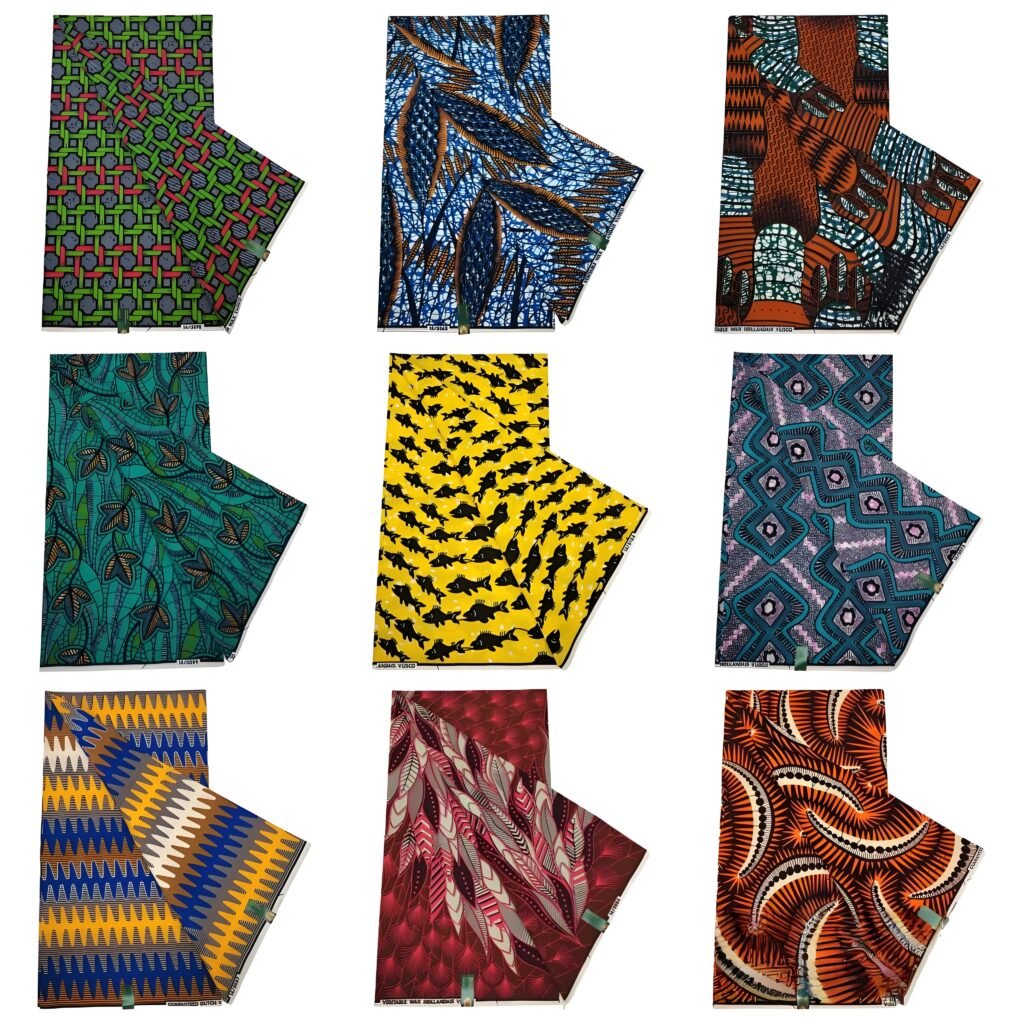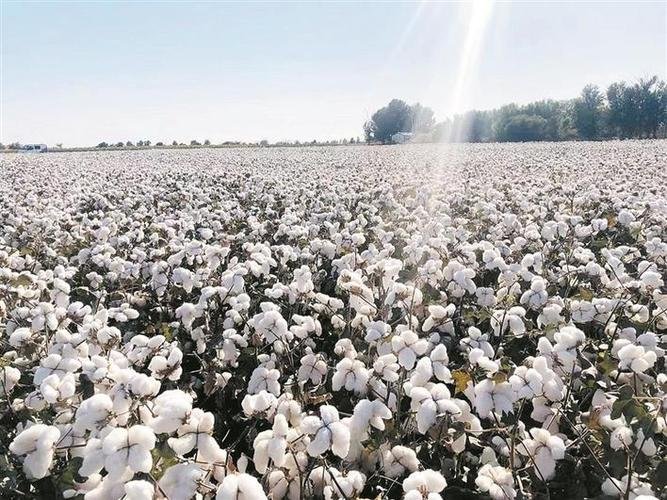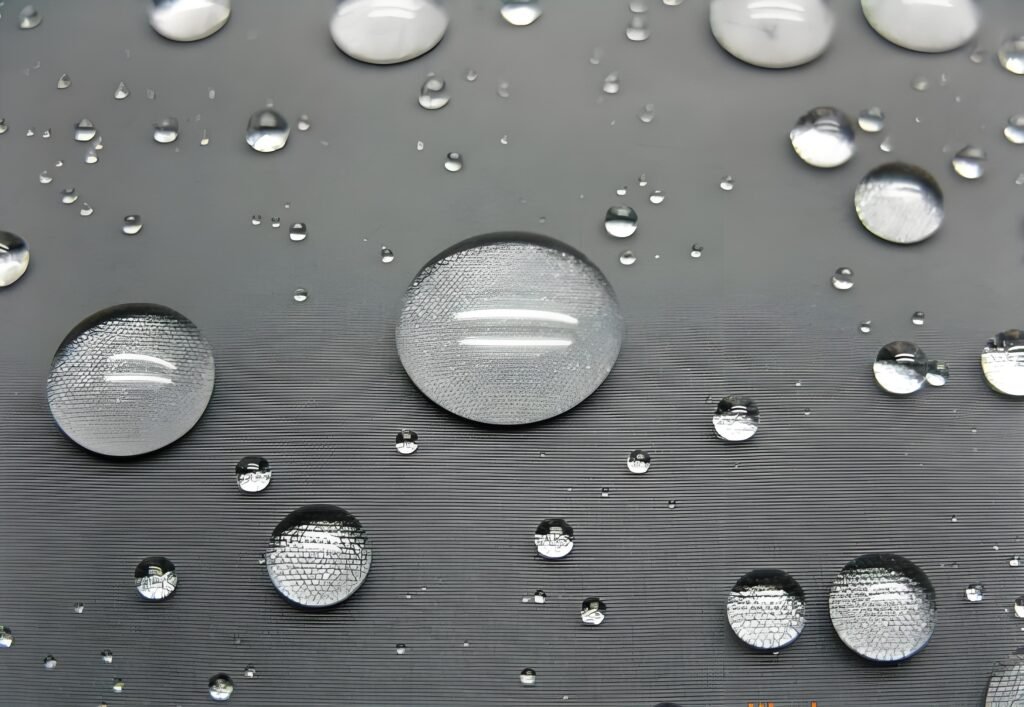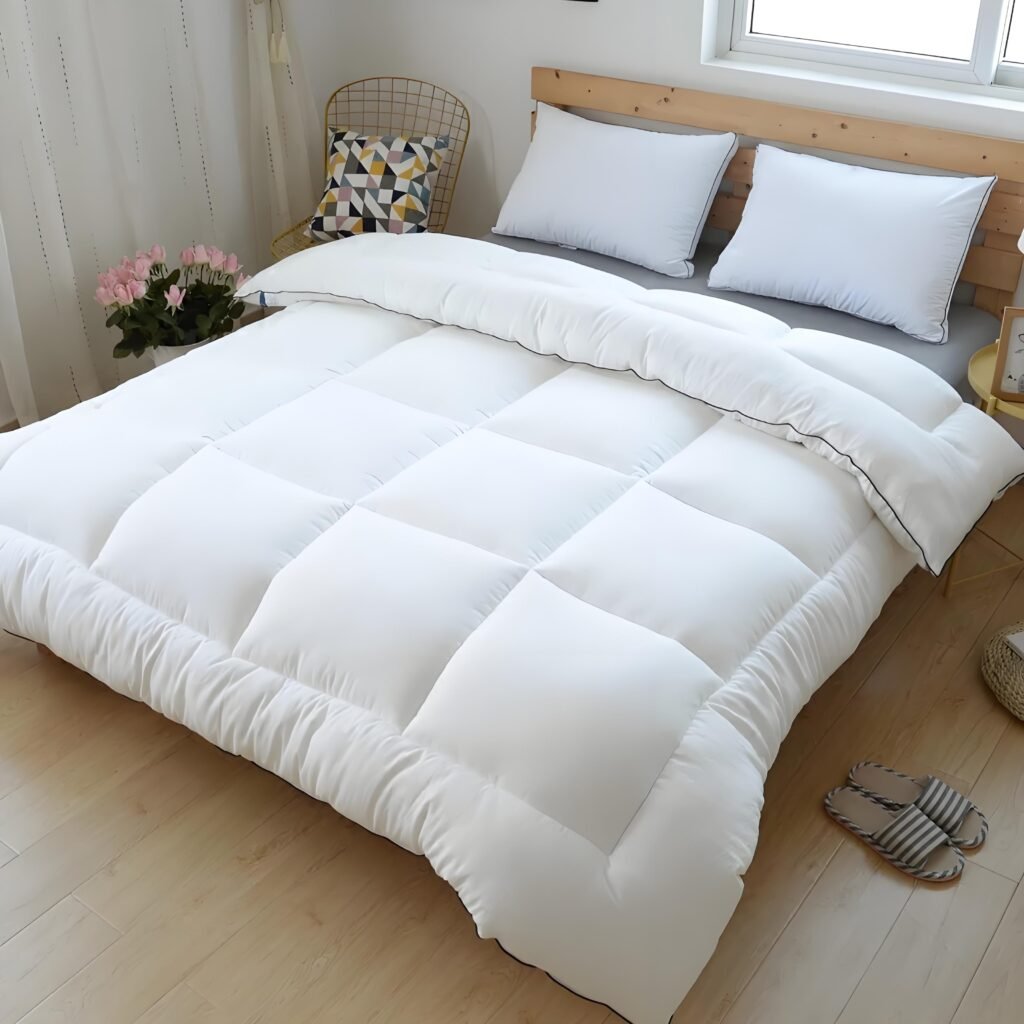
Cotton fabric has been the go‑to textile for everything from comfy tees to luxury sheets. It’s soft, breathable, and feels like a tiny hug every time you slip it on.
Cotton is a natural fiber harvested from the cotton plant’s seed pods; prized for its moisture‑wicking, hypoallergenic properties, and ease of care.
Picture grabbing your favorite cotton T‑shirt on a steamy morning and actually feeling cool—that’s cotton magic. Stick around to learn how cotton goes from farm to fashion, why it’s so wallet‑friendly, and how you can make it work for your next product line.
What Makes Cotton Fabric Unique?
Cotton stands out because it balances comfort, performance, and cost better than almost any other fiber.
Why is cotton so cheap? Massive global output (≈26 Mt in 2023), mechanized harvest, and streamlined supply chains cut unit costs dramatically.
| Factor | Data Point |
|---|---|
| Global Production (2023) | 26 million tonnes (India 6.1 Mt, China 5.2 Mt) |
| Mechanized Harvesting | Reduces labor costs by ~70% vs. hand‑picking |
| Ginning Throughput | 50 kg of raw cotton/minute in modern gins |
| Average Farm Yield | 800 kg lint/hectare in top-producing regions |
| Average Cost per Yard | $1.50–$3.00, depending on quality and finish |
- Scale vs. Sustainability Pros: Cheap T‑shirts, affordable bedding. Cons: Up to 10,000 L water/kg, 25% of global insecticide use.
- Tech & Automation Automated pickers cover 200 ha/day; gins process 10 bales/hour.
- Hidden Costs Low shelf‑price masks environmental cleanup and labor issues.
How is Cotton Fabric Made?

Cotton fabric is made by harvesting cotton bolls, ginning out the fibers, spinning them into yarn, then weaving or knitting that yarn into cloth, and finally finishing with scouring, bleaching, dyeing, and treatments to enhance performance and appearance.
Ever wonder what happens between that fluffy boll and your fitted sheet? Here’s the step‑by‑step:
| Stage | What Happens | Key Metric |
|---|---|---|
| Cultivation | Seeds planted; bolls mature in 5–6 months | 800 kg lint/hectare yield |
| Harvesting | Mechanical pickers or combine harvesters | 200 ha covered/day |
| Ginning | Separates fiber from seeds; compresses into bales | 50 kg/min throughput |
| Opening & Cleaning | Debales cotton; removes trash | 99% fiber purity after cleaning |
| Carding | Aligns fibers into slivers | Produces 0.5–1 kg slivers |
| Spinning | Draft frames + ring spinning → yarn | Ne 20–Ne 60 counts |
| Weaving/Knitting | Converts yarn into fabric | Up to 1 km of fabric/minute |
| Finishing | Scouring, mercerizing, dyeing, printing | 20–40 m/min processing speed |
- Spinning Details Ring vs. Open‑end: Ring spinning yields stronger yarns (10–15% higher tensile strength).
- Weave Impact Twill vs. Plain: Twill weaves (denim) use 15% more yarn but last 25% longer.
- Innovations Air‑jet spinning: +20% speed, –10% energy use. Digital printing: On‑demand, zero‑waste color.
What Are the Different Types of Cotton Fabric?
Cotton fabric comes in many forms—muslin, poplin, denim, sateen, flannel, jersey, canvas—each defined by its weave or knit, weight, and finish to suit everything from lightweight dresses to rugged workwear.
| Fabric | Construction | GSM | Key Traits & Uses |
|---|---|---|---|
| Muslin | Plain weave | 80–120 | Ultralight drape for linings & dresses |
| Poplin | Plain weave | 120–170 | Crisp hand, ideal for shirts & blouses |
| Denim | Twill weave | 300–450 | High‑strength for jeans & jackets |
| Sateen | Satin weave | 150–250 | Smooth, lustrous bed linens & gowns |
| Flannel | Brushed finish | 150–250 | Soft, warm for pajamas & shirts |
| Jersey | Knit | 140–220 | Stretchy tees & sportswear |
| Canvas | Plain/twill | 200–400 | Durable bags, upholstery, tents |
Staple Length Matters
- Long‑Staple Cotton (Egyptian, Pima): 30–35 mm fibers → stronger, silkier yarns.
- Short‑Staple Cotton: 15–25 mm fibers → more affordable, slightly fuzzier finishes.
Weave vs. Knit
- Weave: Tighter structure, low stretch, high durability.
- Knit: Loop construction, natural give (5–10%), superior drape.
Finishes & Blends
- Mercerizing: +25% luster, +20% strength.
- Cotton‑Poly Blends: 80/20 blend cuts wrinkles by 50% and cost by 10%.
Choosing for Your Product
- Lightweight muslin/poplin for warm‑weather apparel.
- Mid‑weight sateen/flannel for home textiles.
- Heavy denim/canvas for workwear and accessories.
How Do You Care for Cotton Fabric?

Wash cotton in cold to warm water (<30 °C) with mild detergent, tumble dry low or air‑dry to prevent shrinkage (2–5%), iron at medium heat, and avoid harsh bleach. Proper care preserves softness, color, and fiber strength.
| Care Step | Recommendation | Impact |
|---|---|---|
| Washing | Cold water (<30 °C), gentle cycle | ↓ Shrinkage (≤2%), ↓ fiber stress |
| Detergent | Mild, enzyme‑free | Preserves color, prevents fabric breakdown |
| Drying | Line dry or tumble low (<60 °C) | ↓ Wrinkles, maintains shape |
| Ironing | Medium heat (150‑180 °C) with steam | Smooths wrinkles, restores drape |
| Stain Removal | Pre‑treat with gentle stain remover | ↑ Lift‑out of oils/proteins |
| Fabric Softening | Use vinegar rinse (½ cup per load) | Natural softener, reduces static |
| Bleaching | Oxygen‑based only, sparingly | Maintains fiber strength, color retention |
- Does Cotton Shrink? Pre‑shrunk (“Sanforized”) cotton limits shrinkage to <1%.
- Prevent Fading: Turn garments inside‑out; wash with similar colors.
- Pilling Control: Wash inside‑out; remove pills gently with fabric shaver.
- Advanced Tips:
- Steam ironing relaxes fibers for a crisp finish.
- Air‑dry knits flat to avoid distortion.
Properly maintained, cotton garments can last 2–3 years (or more) with regular use—keeping you comfortable and looking great.
Is Cotton Fabric Stretchy?
Natural Elasticity
Cotton fibers themselves recover only 1–3% after tension, so woven cotton feels mostly rigid.
Knit vs. Woven
- Woven Plain: Virtually no give across the grain.
- Jersey Knit: Loop structure provides 5–10% mechanical stretch and better drape.
Elastane/Spandex Blends
| Blend Ratio | Stretch Capacity | Recovery Rate | Common Use |
|---|---|---|---|
| 97% Cotton/3% Spandex | 20–25% | 90% | Leggings, jeans |
| 95% Cotton/5% Elastane | 25–30% | 95% | Activewear tops |
Mechanical Finishes
Calendaring or mercerizing under tension can lock in an extra 5–10% “mechanical” stretch without synthetic fibers.
Choosing the Right Fabric
- For structured garments (shirts, jackets): stick to 100% woven cotton.
- For comfort and mobility (tees, athleisure): look for cotton‑elastane blends or knit constructions.
Is Cotton Fabric Waterproof?

No—cotton naturally absorbs moisture (up to 25% of its weight) rather than repelling it. Untreated cotton soaks through in minutes, so waterproof performance requires added barriers such as wax coatings, laminates, or Durable Water‑Repellent (DWR) finishes.
| Treatment Type | Water Resistance | Breathability | Typical Durability |
|---|---|---|---|
| Wax Coating | Moderate (light rain) | Low | 6–12 months maintenance |
| PU Laminate | High (heavy rain) | Moderate | 1–2 years |
| DWR Finish | Light showers | High | 20–30 wash cycles |
Waxed Cotton (Oilskins):
- Traditional method using natural wax or paraffin.
- Repels water for 2–4 hours in light drizzle.
- Requires re‑waxing every 6–12 months.
Polyurethane (PU) Lamination:
- Bonded film on the fabric’s back side.
- Waterproof rating up to 10,000 mm hydrohead.
- Breathability around 5,000 g/m²/day—ideal for rainwear.
DWR (Durable Water‑Repellent) Finishes:
- Fluorine‑free options now available.
- Water beads up and rolls off the surface.
- Performance lasts roughly 20–30 washes.
Emerging Eco‑Finishes:
- Plant‑based waxes (e.g., rice bran oil) offer PFAS‑free water resistance.
- Biopolymer coatings can achieve moderate repellency without petrochemicals.
If you need a canvas bag, jacket, or tent that stays dry yet breathes, start with a midweight cotton (250–350 GSM) and choose a PU‑laminate or high‑quality DWR treatment. Always reapply DWR sprays after washing to maintain repellency.
Cotton soaks up water by design—so it needs help to keep you dry.
Which Industries Use Cotton Fabric the Most?
Cotton reigns supreme in apparel and home textiles, making up roughly 40% of global clothing and 35% of bedding/towel markets. It also finds vital roles in medical supplies, automotive interiors, and eco‑friendly packaging thanks to its versatility and comfort.
| Industry | Cotton Share | Key Products |
|---|---|---|
| Apparel | 40% | T‑shirts, denim, dresses |
| Home Textiles | 35% | Bed sheets, towels, curtains |
| Medical | 10% | Gauze, bandages, surgical drapes |
| Automotive | 8% | Upholstery, headliners, air filters |
| Eco & Industrial | 7% | Reusable bags, industrial wipes |
Apparel & Fashion
- Everyday Wear: Cotton’s softness and breathability make it the go‑to for casual tees, jeans (denim is ~100% cotton), and summer dresses.
- Luxury Segment: Long‑staple varieties (Pima, Egyptian) fetch 20–50% premiums for high‑end shirts and linens.
Home Textiles
- Bedding: Cotton bedsheets account for nearly half of global bedding sales, prized for comfort and ease of care.
- Bath Linens: Towels and bathrobes—100% cotton is preferred for maximum absorbency and softness.
Medical & Healthcare
- Wound Care: Cotton gauze and pads dominate, thanks to hypoallergenic and moisture‑wicking properties.
- Cleanroom Textiles: Specialized cotton blends in surgical drapes and lab coats ensure sterility and comfort.
Automotive Interiors
- Upholstery & Headliners: Cotton‑rich blends deliver durability and breathability in seating and roof linings.
- Air Filtration: Cellulose‑cotton filters trap particulates with minimal airflow resistance.
Eco‑Friendly & Industrial Uses
- Reusable Shopping Bags: Cotton bags replace single‑use plastics, supporting sustainability initiatives.
- Industrial Wipes & Filters: Cotton’s absorbency makes it ideal for heavy‑duty cleaning and oil filtration.
Cotton is everywhere—fashion, home, health, and even auto parts.
| Sector | Share of Cotton Use | Example Products |
|---|---|---|
| Apparel | 40% | Tees, denim, dresses |
| Home Textiles | 35% | Sheets, towels |
| Medical | 10% | Gauze, bandages |
| Automotive | 8% | Upholstery, headliners |
| Other (Eco Goods) | 7% | Reusable bags |
- Trend Alert: Smart‑textiles in healthcare are a $3 billion market by 2028.
- Luxury vs. Mass: Pima and Egyptian cotton command 20–50% price premiums.
Are There Sustainable Alternatives to Cotton Fabric?

Yes—organic cotton, recycled cotton, Tencel™ (lyocell), and hemp all cut water use by 40–91% and greenhouse‑gas emissions by up to 62%, while emerging fibers like Piñatex and mycelium leather add biodegradable, low‑impact options.
| Alternative | Water Use ↓ | GHG Emissions ↓ | Market Share (2023) |
|---|---|---|---|
| Organic Cotton | –91% | –62% | 1.2% |
| Recycled Cotton | –40% | –50% | 2.8% |
| Tencel™ Lyocell | –50% | –30% | 3.5% |
| Hemp | –70% | –50% | <1% |
| Piñatex | N/A (upcycled) | N/A | Emerging |
Organic Cotton
- Certifications: GOTS, USDA Organic ensure zero synthetic pesticides and fair labor.
- Trade‑Off: Yields ~20% lower than conventional, raising raw‑material cost by ~15–30%.
Recycled Cotton
- Source Streams: Post‑consumer garments and cutting scraps.
- Quality Note: Shorter fibers can cause pilling; often blended with virgin cotton.
Cellulosic Fibers (Tencel™ Lyocell)
- Closed‑Loop Process: 99% solvent recovery, minimal water discharge.
- Performance: Soft hand‑feel, high wet and dry strength.
Hemp
- Resilience: Stronger fibers—tensile strength 30% higher than cotton.
- Eco‑Profile: Grows with 50% less water, minimal fertilizer.
Next‑Gen & Upcycled
- Piñatex (Pineapple Leaf): Upcycles agro‑waste into leather‑like material.
- Mycelium Leather: Grown from fungal roots—biodegradable in months.
Critical Reflection
- Price Premiums: Sustainable fibers can cost 20–50% more; budgets matter.
- Consumer Education: Transparent storytelling builds trust and justifies cost.
- Supply Chain Maturity: Many alternatives lack scale—lead times may be longer.
By exploring these options, brands can balance performance, price, and planet. For tailored sustainable fabric solutions—including blends or proprietary eco‑finishes—reach out to Szoneier for low‑MOQ sampling, free design mockups, and fast, quality‑guaranteed production.
Cotton remains the people’s choice—soft, breathable, and endlessly adaptable. Whether you’re building a new athleisure line or sourcing home‑textile basics, understanding these details helps you make smarter, more sustainable decisions.
Ready to bring custom cotton fabrics to your collection? Reach out to Szoneier for free design mockups, low‑MOQ sampling, and rapid production—all backed by 100% quality guarantee and friendly, expert support. Let’s create something amazing together!

